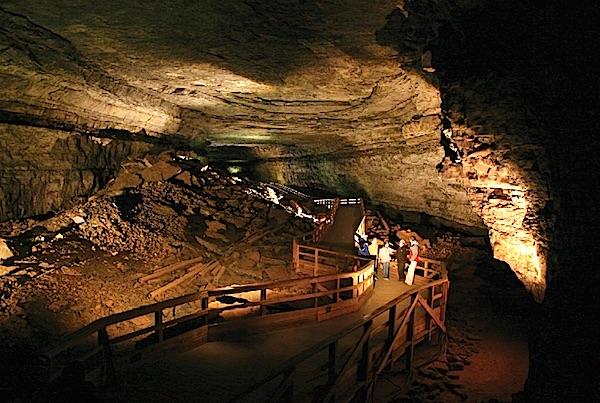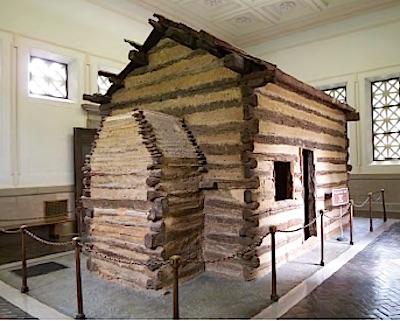
New York City isn't the only home of Broadway. Mammoth Cave has its own version of Broadway that you can stroll on the Historic Cave Tour/NPS
Spring is a lovely time for a visit to the Cumberland Mountains. On rocky slopes up high the Catawba rhododendron blooms. The painted trillium, spring beauty, and red buds burst forth from their dormancy in all of their beauty. Take a few days to fill your eyes with beauty, your soul with history, and your body with adventure.
Begin just south of Louisville, Kentucky. An hour's drive will lead you to Abraham Lincoln's birthplace, in Hodgenville. People from around the world make a point to visit and honor our 16th president here. Lincoln was born in a one-room log cabin on his father's land, Sinking Spring Farm, and it was these humble and rugged beginnings that shaped the man who shaped our nation.
Start at the Abraham Lincoln Birthplace National Historical Park visitor center for a glimpse of the family Bible before you walk up the 56 granite steps (representing Lincoln's age) into the Memorial Building, where you'll marvel at the tiny, one-room cabin that's a replica of the one he was raised in. Walk the fields of the farm and see the landscape he saw, and the creek that nearly drowned him.
For the adventurous, head just 43 miles south to Mammoth Cave National Park, home of the world's longest cave system known, with 400 miles of surveyed passages, and home to a dozen endangered sightless creatures. You can take an hour tour, or travel for hours with only a lantern as did the early explorers, who called, this cave, 'a grand, gloomy and peculiar place.'

This replica cabin gives you a feel for the one in which Lincoln was raised/NPS
You can even take a wilderness tour as you crawl through dusty tunnels. You'll see magnificent structures, with whimsical names like Frozen Niagara, Fat Man's Misery, and the Grand Avenue.
Up top there are 80 miles of hiking trails, 31 miles of river trail on the Green and Nolin rivers, camping, biking, and horseback riding through verdant hardwood forest.
If you pine for the free-flowing rivers of the Cumberland Plateau, drive 120 miles to the southeast to the Big South Fork National River and Recreation Area that hugs the Kentucky-Tennessee border. There are miles of sandstone bluffs, pinnacles, and chimneys along this river valley. Take a whitewater trip, or spend some time bird-watching, or even bear-watching.



Comments
Heh!
That's exactly where I'm headed soon, as I finish my national Parks of the Southeast adventure.
Danny
www.hikertohiker.com